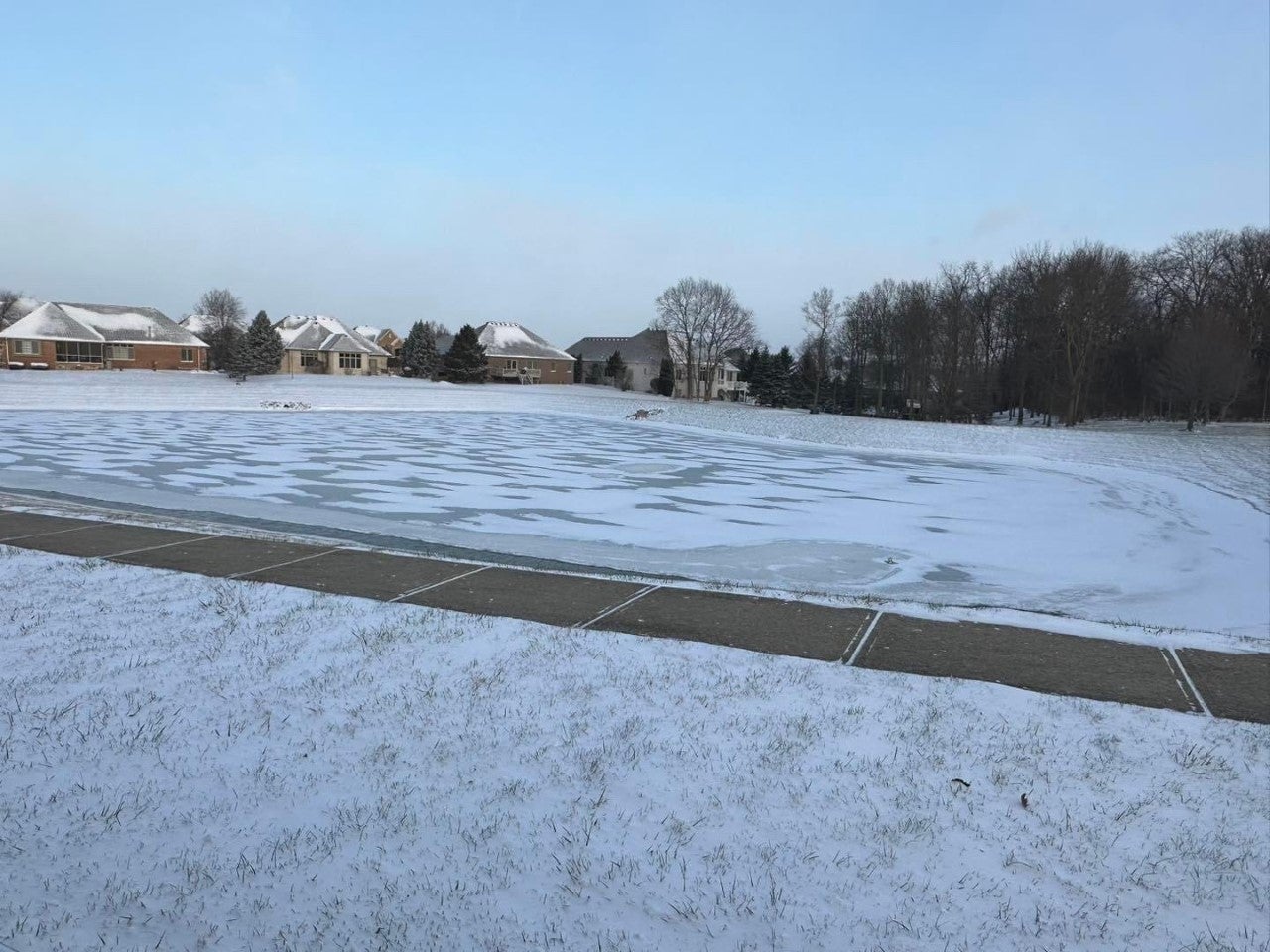Stay off of ice-covered ponds and lakes: ‘There’s no such thing as 100% safe ice’
BARGERSVILLE, Ind. (WISH) — The winter storm that brought snow, gusty winds, and subzero temperatures to Indiana also caused ice to form on many lakes and ponds, creating a dangerous — and possibly deadly — environment for anyone who ventures out on it.
“With temperatures fluctuating up and down and a predicted warm-up this week, these ponds can become a death trap if someone falls through the ice,” Mike Pruitt, deputy chief of the Bargersville Fire Department, said in a statement Monday.
Pruitt says ponds do not freeze evenly, especially in central and southern Indiana.
“There is no such thing as 100% safe ice,” Pruitt added.
Anyone who sees children playing on the ice should call the police and tell the kids to get off of the ice surface, according to Pruitt.
Pruitt also suggests keeping pets on a leash away from the ice.
“Animals will venture onto the pond and fall through. Let first responders retrieve the pet or any other animal,” Pruitt said.
If you see someone fall through the ice, call 911 right away and, if possible, throw something to the person like a rope, extension cord, or anything that will float. Never venture out to make the rescue.
The Indiana Department of Natural Resources also has some safety tips, including:
- Before going on the ice, leave a note of your whereabouts with a friend or family member.
- If you don’t know the thickness of the ice, don‘t go on it.
- Some bodies of water can appear to be frozen solid but have thin ice in several potentially unexpected areas.
- Flowing water, such as rivers and streams, should be avoided when covered by a layer of ice.
Anyone who wants to go ice fishing or snowmobiling should always test the ice beforehand with an ice auger — but don’t do this alone, says Indiana DNR. A thickness of at least 4 inches of ice is recommended for ice fishing; 5 inches is recommended for snowmobiling. When out on the ice, carry ice hooks and rope gear, and always wear a life jacket or flotation coat.
Visit the Indiana DNR website for more tips.
